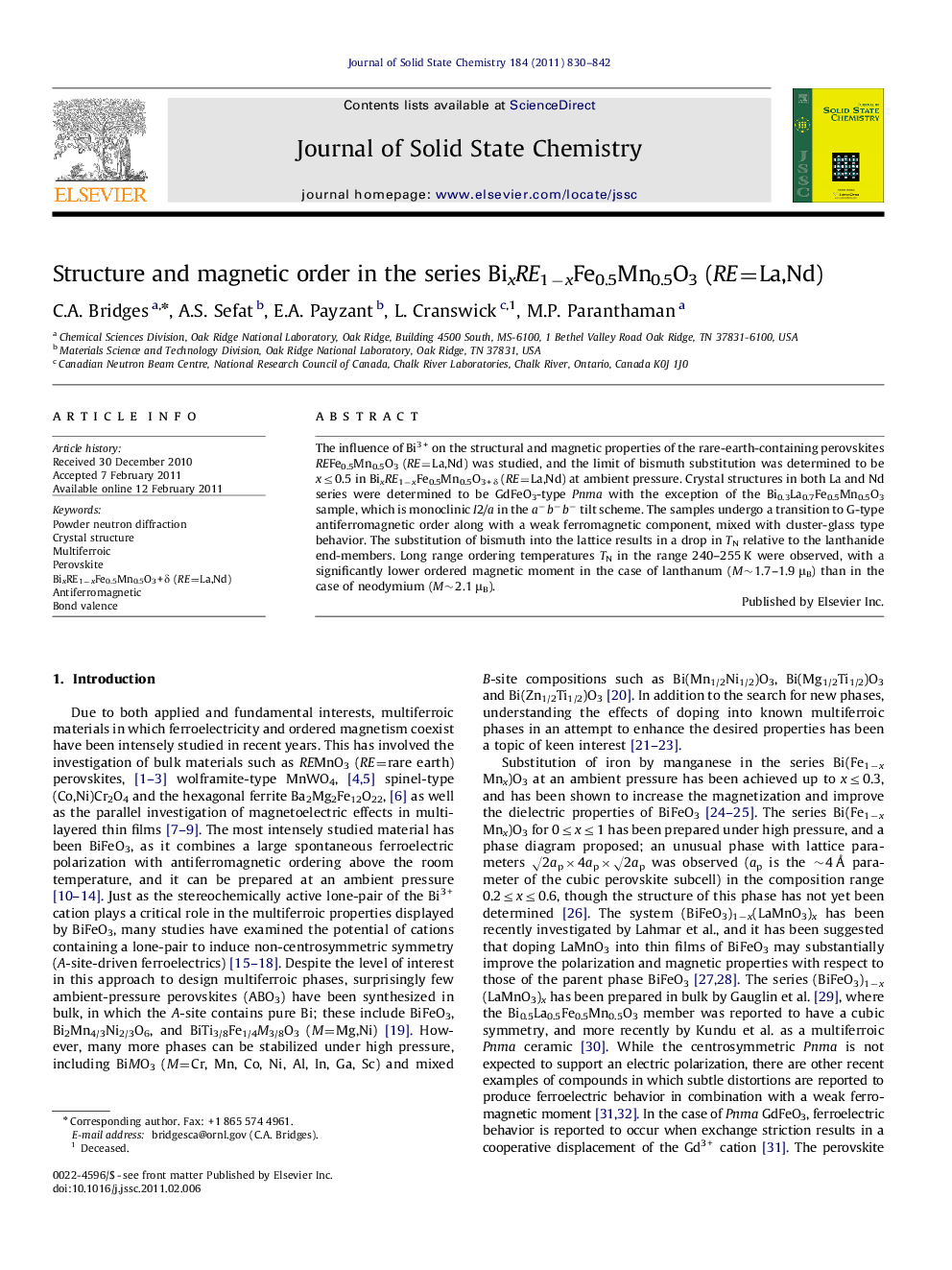| Article ID | Journal | Published Year | Pages | File Type |
|---|---|---|---|---|
| 1330912 | Journal of Solid State Chemistry | 2011 | 13 Pages |
The influence of Bi3+ on the structural and magnetic properties of the rare-earth-containing perovskites REFe0.5Mn0.5O3 (RE=La,Nd) was studied, and the limit of bismuth substitution was determined to be x≤0.5 in BixRE1−xFe0.5Mn0.5O3+δ (RE=La,Nd) at ambient pressure. Crystal structures in both La and Nd series were determined to be GdFeO3-type Pnma with the exception of the Bi0.3La0.7Fe0.5Mn0.5O3 sample, which is monoclinic I2/a in the a−b−b− tilt scheme. The samples undergo a transition to G-type antiferromagnetic order along with a weak ferromagnetic component, mixed with cluster-glass type behavior. The substitution of bismuth into the lattice results in a drop in TN relative to the lanthanide end-members. Long range ordering temperatures TN in the range 240–255 K were observed, with a significantly lower ordered magnetic moment in the case of lanthanum (M∼1.7–1.9 μB) than in the case of neodymium (M∼2.1 μB).
Graphical abstractThe influence of Bi3+ on the structural and magnetic properties of the rare-earth-containing perovskites REFe0.5Mn0.5O3 (RE=La,Nd) was studied. Crystal structures in both La and Nd series were determined using X-ray and neutron diffraction to be GdFeO3-type Pnma with the exception of the Bi0.3La0.7Fe0.5Mn0.5O3 sample, which is monoclinic I2/a in the a−b−b− tilt scheme. The samples undergo a transition to G-type antiferromagnetic order along with a weak ferromagnetic component, mixed with the cluster-glass type behavior.Figure optionsDownload full-size imageDownload as PowerPoint slideResearch highlights► Influence of Bi3+ on the structural and magnetic properties of rare-earth-containing perovskites. ► Octahedral tilting produces orthorhombic Pnma and monoclinic I2/a structures. ► G-type antiferromagnetic order along with a weak ferromagnetic component.
